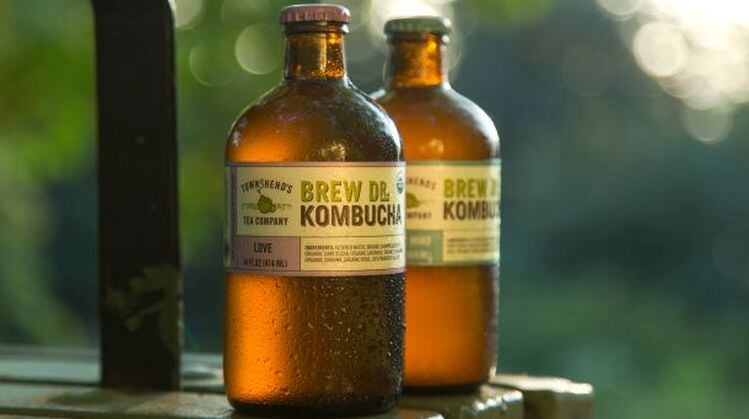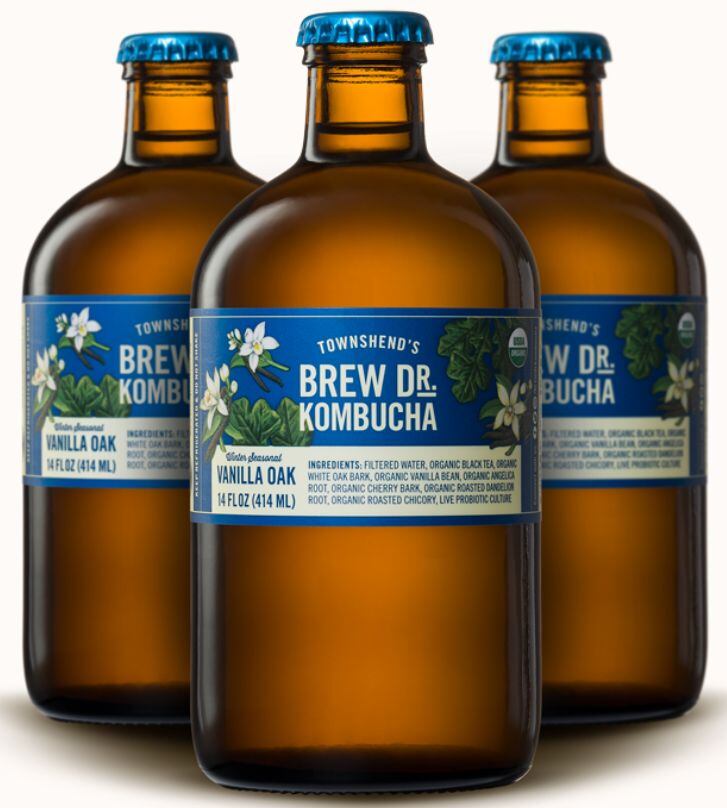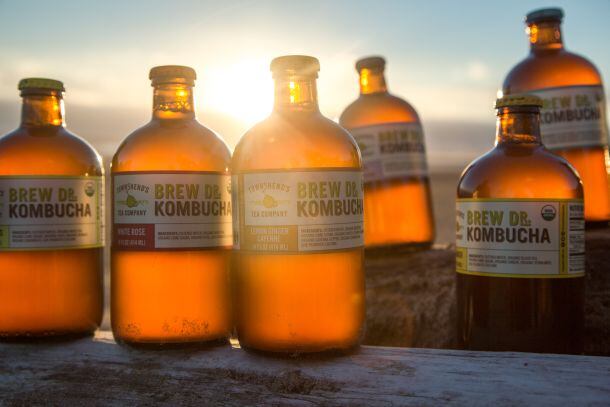Thomas, a tea aficionado who first got into the kombucha (fermented tea) market in 2008 when customers at the chain of tea houses he ran started asking for it, was speaking to FoodNavigator-USA at the BevNET Live winter event in Santa Monica this week.
Growth at the ‘100% raw’ organic brand - now #3 in the kombucha category behind GT’s and KeVita and available in 14oz and 32oz glass bottles – is outpacing the category (which is still growing at 30-40% year-on-year) with distribution in accounts from Whole Foods Market and Sprouts to Trader Joe’s, Costco, and Ralph’s (Kroger), he claimed.
“The category is still growing strongly, but we’re outpacing it,” said Thomas, who makes Brew Dr Kombucha products in-house in Oregon.
“We’re predicting sales will double in 2018 to close to $60m. We’re also introducing a can – probably around the summer – and working on new seasonal flavors such as strawberry basil –which like all of our products uses only real organic ingredients, no juices or flavors added after the fermentation,” added Thomas, who also runs a chain of teahouses under the Townshend’s Tea Company brand and a liquor company called Thomas & Sons using the distilled spirits from Brew Dr.
‘It would be helpful to have a definition of kombucha’
Asked how the kombucha category is evolving, and whether brands that pasteurize their products and add probiotics afterwards should still be considered ‘kombucha’ - a topic generating an ongoing debate in the trade – Thomas said:
“It would definitely be helpful to have a definition of kombucha. Right now you’ve got brands making kombucha the traditional way [fermenting tea with sugar and a culture of yeast and bacteria] but not always controlling the sugar or alcohol very carefully, and some brands that are just using tea concentrates and flavors and adding lab-made probiotics after a pasteurization process, which is not really what consumers understand by kombucha.
“Millennials in particular want to know about the backstory, the traditions, the way products are made, and they want an authentic raw kombucha. But I also want to make a kombucha that your kids can drink [ie. one that does not exceed the 0.5%abv limit] without a ton of sugar in it, and I think many of the brands on the market are not being transparent in their labeling [of sugar or alcohol], so the industry still has a lot of work to do.”

Low-temperature vacuum distillation process
So how does Brew Dr control the alcohol content in its product to ensure that it remains below the legal 0.5% abv threshold for a non-alcoholic kombucha [tens of thousands of kombucha bottles were pulled from shelves in 2010 after it emerged they exceeded the legal alcohol limit, and some players argue that this remains an ongoing problem]?

“We start with organic tea and botanicals, add water and organic cane sugar and steep the tea – we don’t add juice or flavors after fermentation,” said Thomas, who is now making around 600,000 bottles a week. Next the tea is pumped into tanks already holding some kombucha and a SCOBY [a symbiotic culture of bacteria and yeast].
After a two-week fermentation process, Brew Dr chills the kombucha (which at this point has an alcohol content of between 1-3% abv) before pumping it into the top of a spinning cone column – a device (also used by fellow kombucha brand Aqua ViTea) designed to extract and recover volatile compounds using steam, under vacuum conditions.
Inside, the atmospheric pressure is reduced to the point where ethanol (ie the alcohol in the kombucha) atomizes at around 90 degrees fahrenheit. Clean steam is fed into the bottom of the tank, attaches to the ethanol and carries it out of the top and into a secondary chilled column where it turns from gas back into a liquid state (an alcoholic distillate used in the Thomas & Sons distillery).
The kombucha – which now has an alcohol content of around 0.1% - passes out the bottom of the column, and goes to a chilled holding tank, all the while maintaining its live and active bacteria and organic acids because it is never heated beyond 100 degrees fahrenheit, claimed Thomas (heat pasteurization typically involves temperatures exceeding 160 degrees fahrenheit, he said).

One of the fastest-growing segments in the functional beverages category, kombucha is tea fermented with live bacteria and yeast that creates carbon dioxide, alcohol and acetic acid, and has a fizzy, slightly vinegary taste.
According to founder Matt Thomas, Brew Dr Kombucha utilizes a method of low-temperature distillation to remove alcohol without harming the kombucha’s bacteria and yeasts (acetic acetobacter, lactobacillus, saccharomyces); and organic acids: acetic acid, lactic acid, propionic acid, glucuronic acid and gluconic acid.
